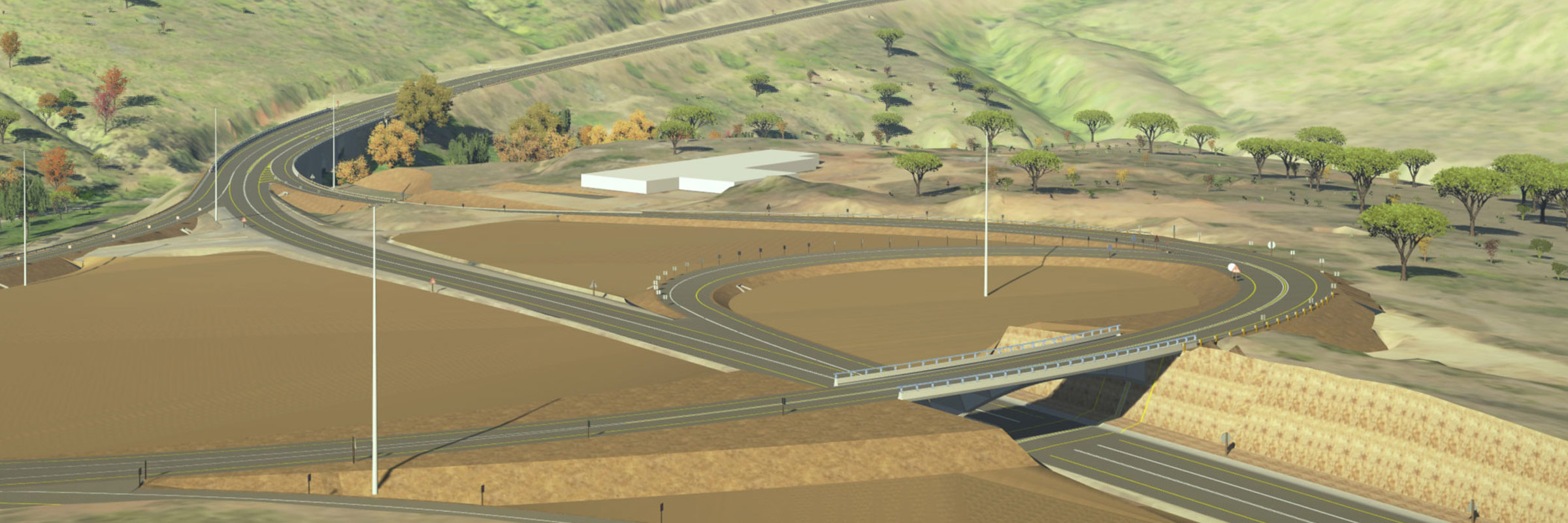
The Challenge
The Montrose Interchange sits on the only east-west route between South Africa and Mozambique, eventually linking Botswana to the west. This transport system is critical to the economies of all three countries.
The original road design, initially constructed in the 1970s, is inadequate for the traffic volume the area is now experiencing.
The interchange occupies the narrow space between the Crocodile and Elands Rivers, with constrained topography and rough terrain presenting challenges to design standards. To achieve our client’s vision of a new grade-separated interchange that would facilitate free-flow for all traffic movements, the design had to be cost effective yet of the highest standards achievable.
Bringing complex concepts to life
The SMEC team built a 3D reality mesh of the site using UAV drone photography and Bentley’s ContextCapture software for the conceptual design. This gave the team greater context for site logistics and presented them with a raft of potential alternatives that supported confident design solutions to the project challenges.
In the past, designs such as these have often been presented in static two-dimensional plans. This can prove problematic for those without an engineering background, as it can be challenging to visualise the completed project until construction is either underway or complete. At the end of the detail design stage, we demonstrated the full model, which included models from the roads, stormwater, structural, and electric disciplines, to our client.
“Bringing the entire project into the 3D space, and especially into VR, enabled everyone involved to experience the completed project before construction even commenced,” adds Warren
“Most projects of this nature are undertaken with constrained budgets that do not make provision for visualisations or detailed modelling. This meant we had to work smarter than ever, leveraging our in-house technological capacity and specialist expertise to provide innovative solutions in a highly competitive market.”
The outcomes
Work is now underway on the project’s detailed design, with our client praising the confident digital engineering modelling the team was able to showcase.
The success of the solution has paved the way for VR to be applied to future projects with much less effort. The team has built up a library of assets applicable to South African infrastructure, such as road signs and guardrails, for use in future projects. The long-term plan is that ‘going virtual’ will just be a matter of clicking the right buttons, says Warren.
“The aim is always to bring the various disciplines on such a project together using a single multi-disciplinary model, and the Montrose Interchange is a win on the road to that goal. Our Roads and Highways, Stormwater, Structures, and Electrical teams collaborated to navigate through the compatibility issues to bring all the components of the design together for the VR environment.”
Warren adds that he hopes to demonstrate to clients and partners that taking a project from a simple CAD model to a full VR experience shouldn’t be reserved for special or major projects only.
“In South Africa, and I think I can safely say around the world, clients are facing increasing challenges in delivering infrastructure, ranging from constrained budgets to difficult natural environments to tight timeframes. The strategic use of VR, combined with the expertise of specialist teams, can provide innovative solutions that help to address these challenges.”




